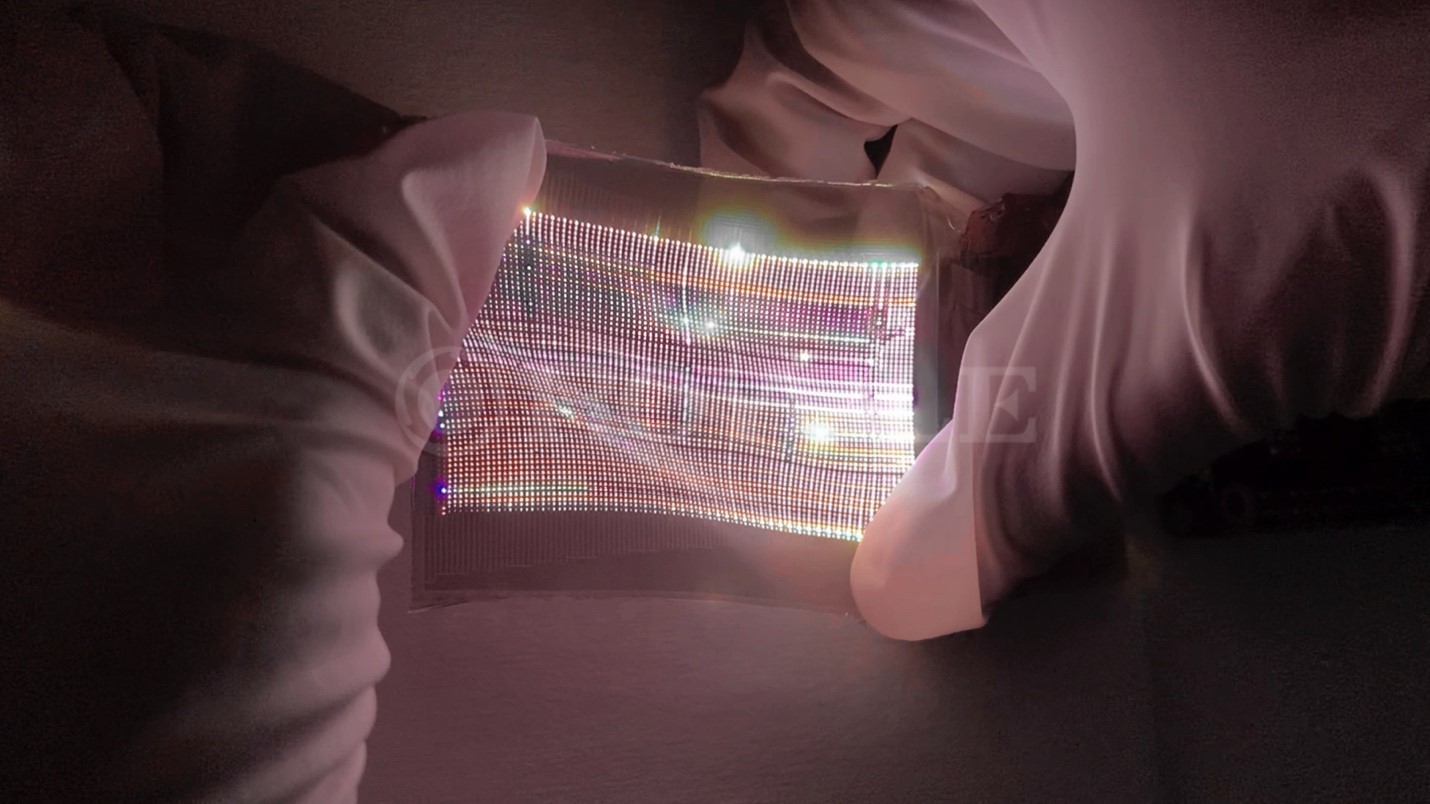Remember which company made the first foldable phone? Samsung, you say? Well, it was Royole and it introduced the world’s first foldable phone which although didn’t receive much attention. Cut to now, it is working on new technology. Call it a stretchable display. It uses micro-LEDs embedded on an elastic circuit that sums up the part where I mentioned “stretchable display”.
Unlike foldable phones which although can be folded, they are rigid and can only be folded on one axis. Cut to Royole’s budding stretchable display technology, it can actually fold on two axes and can be molded in any shape including dome-shaped or spherical displays and whatnot.

According to the details available, Royole showcased a 2.7-inch stretchable display with a resolution of 96×60 pixels. The size may not impress you but it is a prototype of a technology that is out-of-the-box. The stretchable panel can be stretched up to 130 percent of its original size and it can be bent to 40-degrees. The panel is transparent and allows 70 percent of the light to pass through which is more than what LG OLED transparent panels achieve some time ago with 40 percent light passing through the panel.
The use of micro-LED made it all possible. As the name suggests, these are LEDs that are smaller than usual laid on a circuit (or say elastic circuit in case of this technology). Having a smaller island and RGB LED on top with bigger gaps in between allows for greater transparency as well as allows for movements when the material is stretched allowing more light to pass through.
At the moment, the stretchable displays can have pixel densities of up to 120 PPI which isn’t impressive (Again) but hey, it is a new technology and still requires further development before it goes from prototype to commercial category. Fitness, fashion, sports, health, transportations, and others are apparently some of the key fields of applications of these stretchable displays.
For all things tech, stay tuned on TrueTech to stay up to date with the latest tech news.
